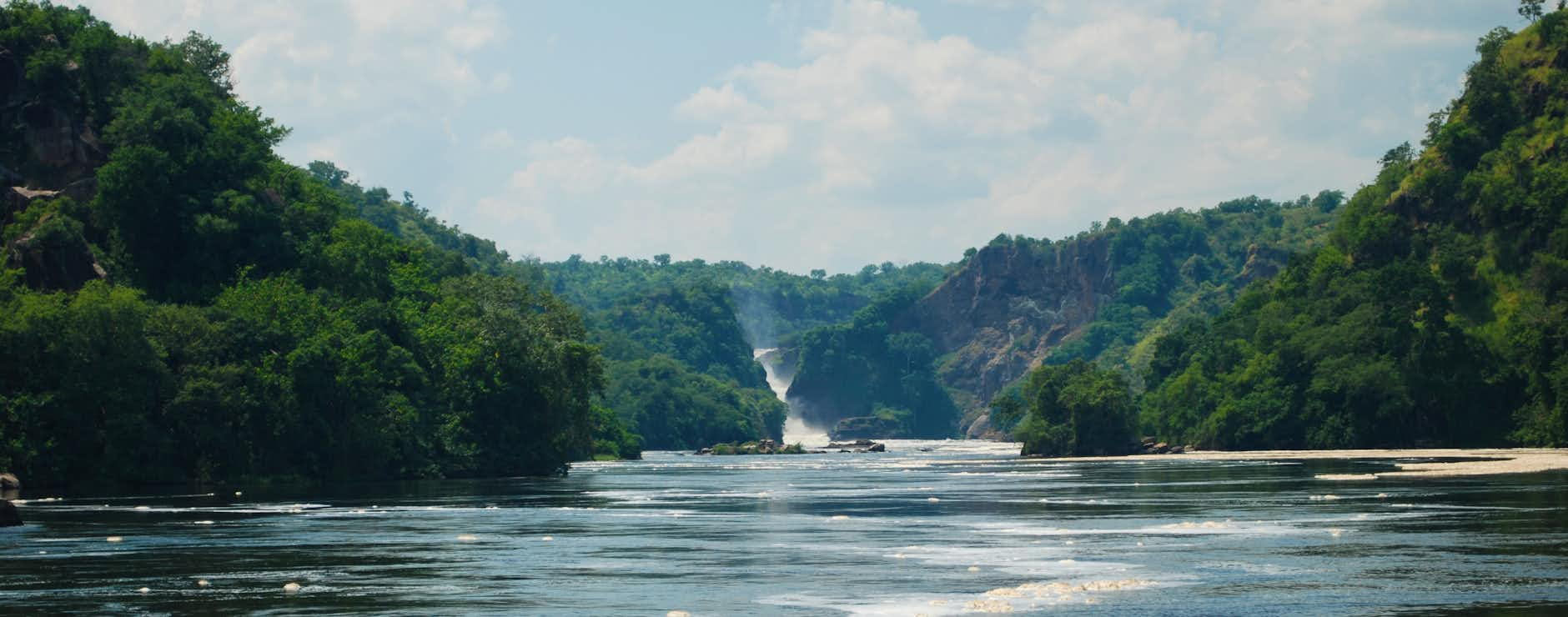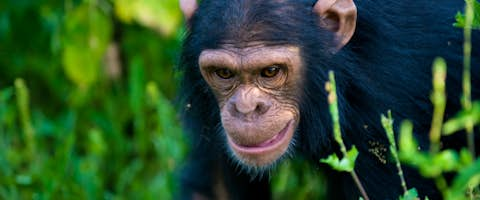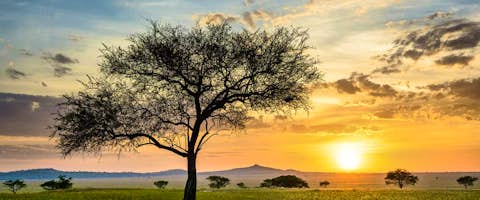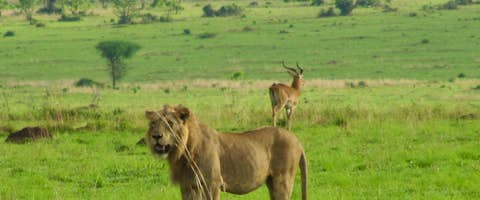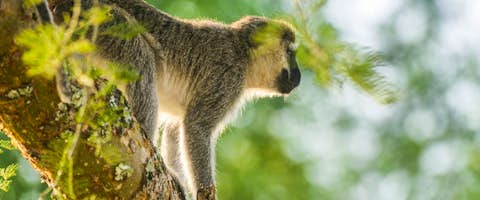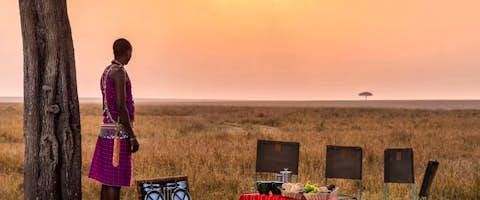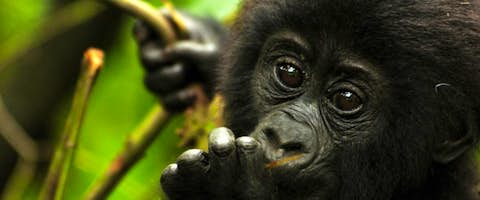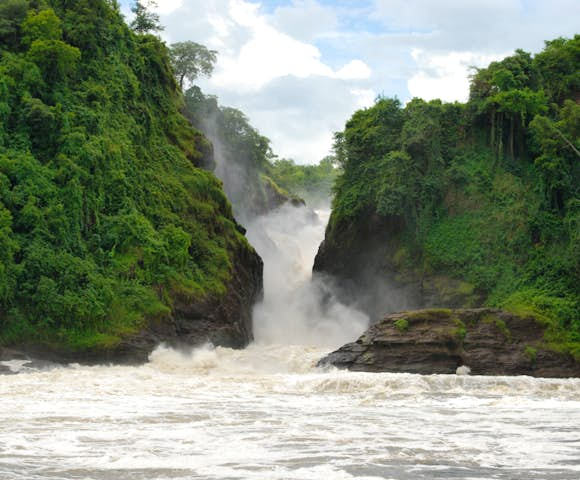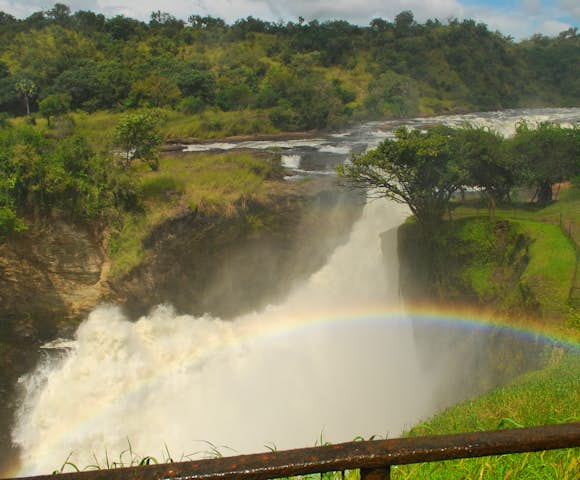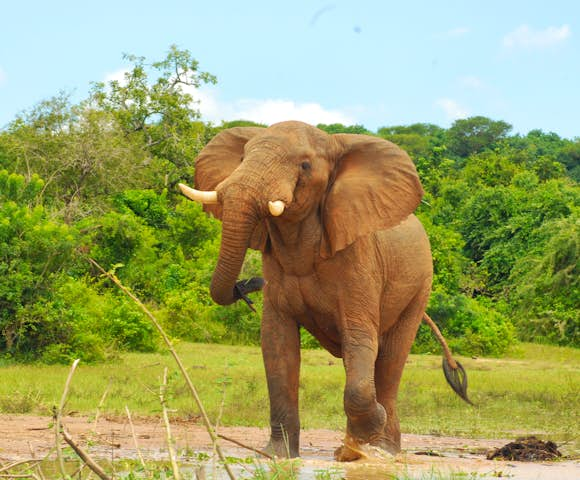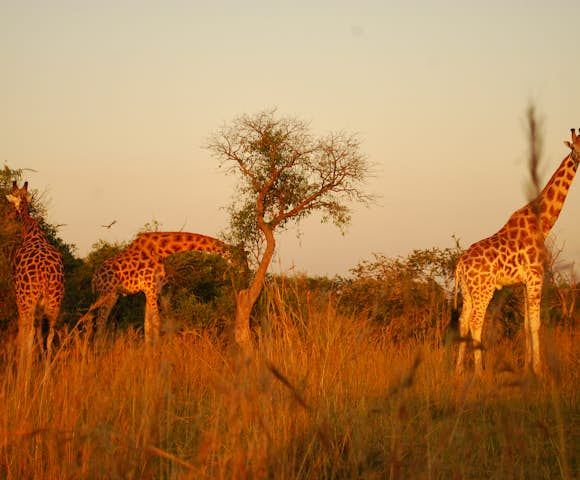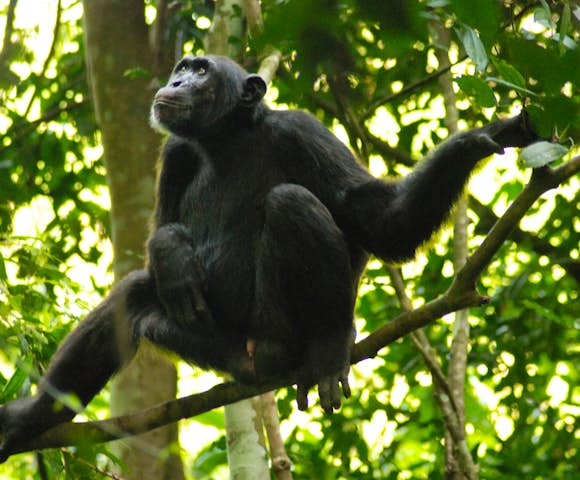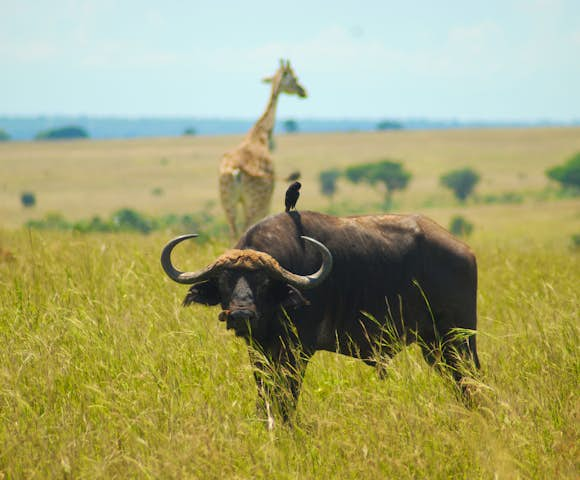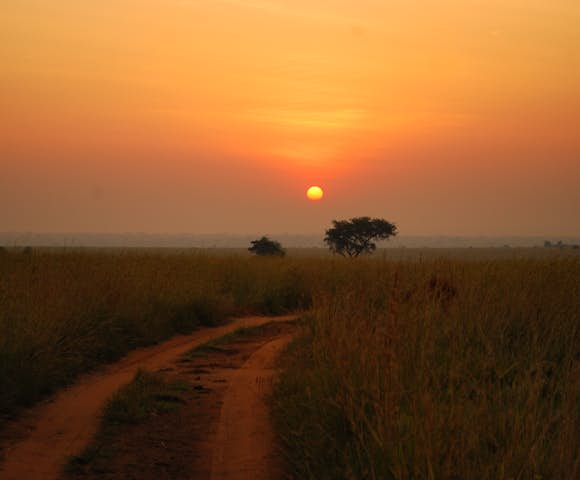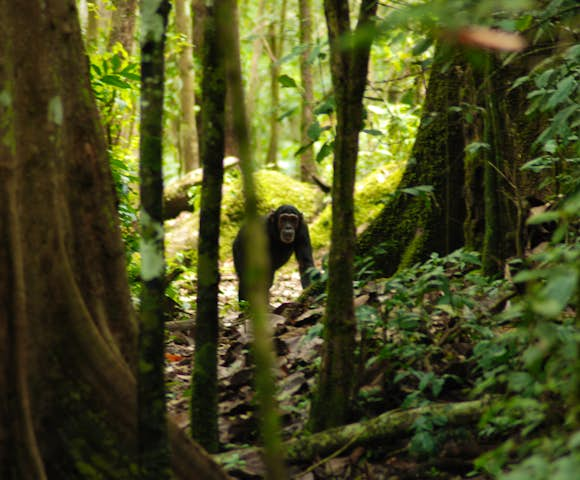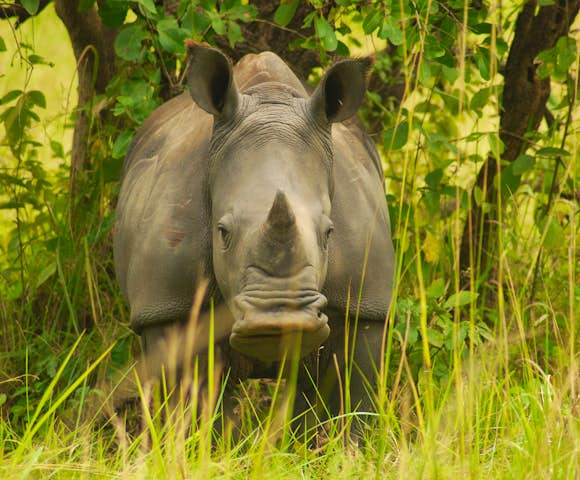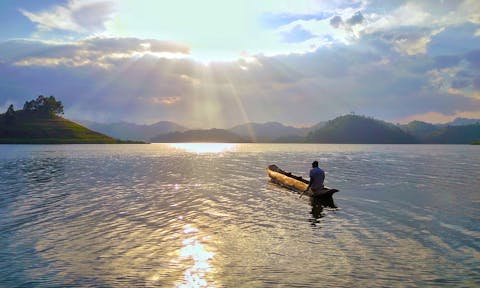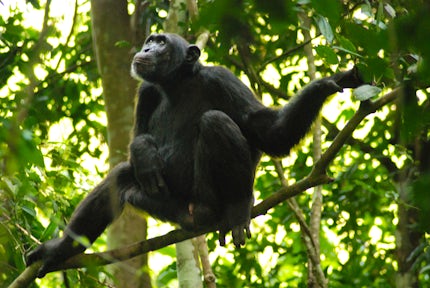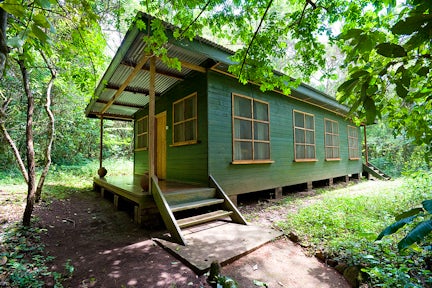Guide to Murchison Falls National Park
Contents of our guide

Popular Trips to Uganda
The tours below showcase just some of what is possible. Use these itineraries as starting points, or to draw inspiration. Then get in touch, and let our expert team help craft the perfect itinerary for you.
1. Introduction to Murchison
A brief history
"The fall of water was snow-white, which had a superb effect as it contrasted with the dark cliffs that walled the water, while the graceful palms of the tropics and wild plantains perfected the beauty of the view. This was the greatest waterfall of the Nile.” - Wrote the explorer Samuel Baker in 1864.
In the 150 years that have passed, the view has remained as impressive and now the wildlife levels in the surrounding national park are recovering well after the depredations of the 1970s and ‘80s, securing the Park’s reputation as one of Uganda’s most popular destinations.
Initially protected as a game reserve in 1926, Murchison was declared as one of Uganda’s first national parks in 1952 and now covers an area of 3,840 square kilometres making it the largest protected area in the country. It lies at the northern end of the Albertine Rift Valley where the Bunyoro Escarpment descends into the lowland plains of the savannah.
In the 1960s, Murchison’s problem was that it had too many animals, which resulted in an elephant and hippo cull to try to manage large herbivore utilisation. The years of civil war provided their own solution and resulted in a massive population drop for all species.
However, peace and an understanding of the value of tourism has greatly helped the recovery of many populations. Elephant are thriving; the park holds the largest global population of Rothschild giraffe (only seen in Murchison and Kidepo); buffalo numbers are growing as are the Ugandan kob. The lion population is estimated to be around 200, split across about 20 prides and even leopard are being seen regularly.
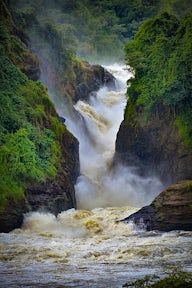
Murchison Falls Boat Cruise
2. The Murchison Falls
The park is bisected by the Nile River. As it flows west into Lake Albert, the Nile squeezes through an 8-metre gap to plunge 45 metres over the remnant Rift Valley wall down into the aptly named ‘Devil’s Cauldron’, creating the famous rainbow captured in so many photographs.
The Falls are the final obstruction in an 80 kilometre long reach of rapids from which the Nile transforms into a broad, placid, river destined for Lake Albert and a long journey north.
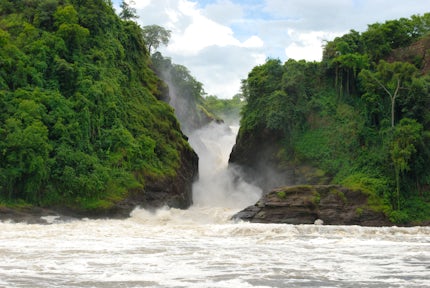
The Nile river crashes through a narrow valley before relaxing into Lake Albert.
The Falls are best reached in a two-stage excursion that combines a boat safari on the Nile where you will see elephant, giraffe, buffalo, hippo, Nile crocodile and aquatic birds on the shoreline or in the shallows, followed by a 30-minute walk around the cliffs to the head of the Falls.
Sailing west, rather than east to the Falls, takes you to the Lake Albert delta, one of the best places in Uganda to see the famous Shoebill storks. If you prefer to be more active on the water, then Murchison is also a great place for fishing. Specialised excursions are available across various locations.

The stunning Murchison Falls, off in the distance
3. Wildlife in Murchison Falls
Game drives in the savannah grasslands and riverine woodland of the Buligi Peninsula provide excellent sightings of lion, elephant, buffalo, giraffe and Ugandan kob antelope. Leopard are increasingly seen; only rhino are missing, but the plan is to reintroduce them from the Ziwa Rhino Sanctuary.
In the wooded south of the park, the Budongo Forest Reserve is a haven for birders and a great chimpanzee tracking location.
Although most visitors spend just two or three nights in Murchison, it is possible to stay for much longer and still leave wanting more.
4. Boat Safaris & Game Drives
Falls River Safari
Murchison’s signature experience is the boat cruise upriver from Paraa to the Falls. Best enjoyed in the afternoon, when the western sun illuminates the spray, this can be a return trip of about 3 hours. Or, you can be met by your driver-guide at the Falls and travel back to your lodge by road. This works particularly well when you are staying on the south bank.
The boat journey is a stately procession in either a double-deck boat or a smaller motor cruiser. Seated comfortably, without any of the bumps associated with game drives, you will pass close to the river bank, seeing the large mammals, crocodiles and birdlife that frequent the shoreline. There is something wonderful about watching a totally relaxed six tonne bull elephant drink from a distance of just a couple of metres.
The boats cannot stop at the foot of the Falls themselves, it is just too dangerous. Instead, for those wanting to reach the top, visitors disembark at the foot of a cliff. Met by a guide, you then walk through riverine forest, along the cliff face and up onto the break of the Falls, stopping at different viewpoints along the way. The spray will probably soak you, but the experience is well worth it.

Water plunges into the 'Devils Cauldron' creating a rainbow.
Lake Albert Delta River Safari
Going downstream, and this time often in the morning, the Lake Albert Delta river safari is in many ways a continuation of the Falls cruise experience, but with the Delta as your target. There you have a high chance of seeing Shoebill stork as well as other large congregations of aquatic birdlife.
Although similar to the Falls cruise, the experience isn’t just about the wildlife sightings. The feeling of moving from the river towards the wide open waters of the lake is also rather special and produces some lovely photographs.

Game Drives
Seeing wildlife from the river is delightful, but it can’t beat the excitement of a game drive. The feeling that comes from placing yourself in the middle of a resting pride of lion; watching a tower of giraffe browse peacefully from acacia tops; or the excitement of rolling slowly through thick bush never sure when you will meet the next elephant.
The majority of game drives in Murchison are enjoyed on the Buligi Peninsula where 170km of tracks cross through open savanna grassland, woodland, acacia and riverine vegetation. Driving in the early morning (first south/north ferry crossing at Paraa is at 07:00) and late afternoon, you can expect to see elephant, buffalo, antelopes and giraffe.

Buffalos and Giraffes are just some of the animals sharing the plains.
Lion are increasingly seen with the majority of the Park's prides found here predating on Ugandan kob. You may even see a leopard. The tracks converge at Delta Point where the Nile flows north out of Lake Albert. This is a convenient place to stop for refreshments whilst viewing waterbirds and distant hippos offshore.
Less visited, but available for intrepid explorers is the southern ‘Heart of Murchison’. This is a recently opened section of the Park, developed with the intention of easing visitor pressure on Buligi. While much of the southern part of Murchison is covered by bush and forest, a lovely tract of savanna rolls down to the river from the Rabongo road in the very centre of the park.
Substantial herds of Uganda kob have made this a prime location for lions. In January 2016, 15 giraffes were translocated to this area making it now possible to spot these giants on the Honey Moon track.
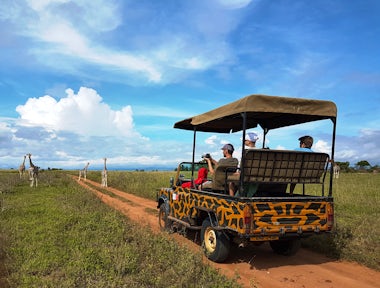
Head out on an early morning game drive in "The Giraffe".
5. Beyond the rivers and savannah plains
Chimp Tracking
With a contact rate of about 80%, the chance of seeing the chimps is not as high as at Kibale National Park, but it is greater than at Kyambura Gorge at Queen Elizabeth National Park. Up to 6 guided groups of 3 people track the chimps each morning and afternoon.
Contact is normally made after only an hour’s walking, so the excursion as a whole lasts about 3 hours. A full day habituation experience is also available here for those looking for a more in depth experience.
Thanks to the centre’s historical association with the Jane Goodall Institute, the interpretive guides at Budongo Forest are extremely good at telling the wider story of the chimps and the forest, not just leading you to a contact.
Hot Air Balloon flights
If you have taken boat cruises and game drives, but would like another special way to see Murchison, then take to the sky with a hot air balloon flight.
This is a recent innovation for Murchison and provides an exciting - yet peaceful - way to experience the Park around Paraa.

Hot air balloons let you witness QENP from the skies.
Bird Walks
The southern forests of Kaniyo Pabidi are also one of the best birding sites in Uganda - making for incredible bird walks. Like in Kibale, the best place to look for birds is on the fringes of the canopy, close to the lodge and on the road verges.
With aquatic forest and grassland habitats available, the bird life is always excellent. The headline act is the Shoebill stork. Raptors are also well represented, with over 53 species recorded. Other favourites are the goliath heron, the largest in the world; Uganda’s national bird, the grey crowned crane; the Abyssinian ground hornbill and East Africa’s only known population of Puvel’s illadopsis
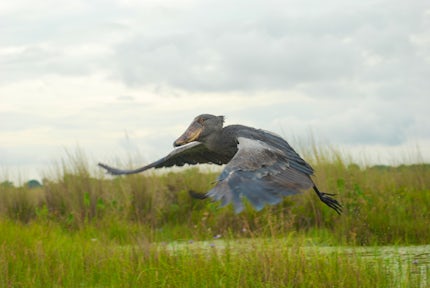
The Shoebill is one of the most sought after species for birders.
Fishing
The waters of the Victoria Nile hold some massive fish, making Murchison a rewarding destination for the avid angler. Adventurous fishermen target the large Nile Perch, known locally as mputa and cat fish, semutundu. Other fish include tiger fish, electric cat-fish and tilapia.
The record for the largest Nile perch is a 113 kilogram monster landed at the water gauge opposite the crocodile pool. The largest cat-fish was 45 kilograms, landed near the Nyamusika Cliffs.
Permits are required to fish, and you must be accompanied by UWA rangers.

A typical safari at Murchison
-
Day 1
The first day is typically a travel day. You will most likely be travelling to Murchison by road from Entebbe, or coming up from the south after having explored the southwestern safari circuit. If you're coming in from Entebbe, you'll be heading north through a beautiful and varied landscape to Murchison Falls National Park, a journey of (350 kilometres, 6-7).
En route you will stop at Ziwa Rhino Sanctuary. The reserve was created to reintroduce rhinos to the country which had been extinct since 1982. Together with a guide you will track the rhinos and observe them in their habitat at a close but safe distance.
Have lunch at the Rhino sanctuary before pressing on to Murchison. An hour's drive into the park takes you to Murchison Falls, the waterfall that gives Murchison its name and one of Uganda's most beautiful sights.
-
Day 2
After an early breakfast, you start the day with a game drive on the northern bank of the Nile, with chances of seeing Rothschild Giraffe, elephants, lions, Jackson Hartebeest, Oribis, Waterbucks, different species of the savannah woodland birds, and if you're lucky even the elusive leopard amongst a multitude of African plains game.
In the afternoon, enjoy a Nile launch cruise to the bottom of the water falls for game viewing at close quarters. After the cruise, get off from the bottom of the falls and hike up to the top of the falls where you will be rewarded with amazing views of the Nile. Meet your guide for a transfer back to your lodge.
-
Day 3
A second day of morning and afternoon game drives. Even if yesterday was full of amazing sightings, every drive is different, and you never know what you will encounter.
7. When to Visit
Murchison has an average annual rainfall of 1,085mm, with much of this falling between March and November. This doesn’t prevent access to the park: June to September is still one of the most popular times to visit, but you should be ready for short, sharp bursts of rains.
December to February is drier, but also much hotter, with an average high of 33 degrees Celsius.
As with much of Africa, the dry season forces wildlife to congregate around water sources, making for concentrated sightings. While the wetter months see the greatest density of bird life and the lowest visitor numbers.
8. Places to Stay
The accommodation options at Murchison are split between the three locations:
- The Albert Nile and the northwest.
- Paraa and the Victoria Nile.
- Kaniyo Pabidi and the Masindi road.
Pakuba Safari Lodge
The lodges close to the Albert Nile in the northwest provide the greatest choice of budget options, but only one, Pakuba Safari Lodgeis actually within the park.
Pakuba has a great location on the east bank of the Albert Nile. The lodge is a modern incarnation of the former state lodge, whose ruins can still be seen. It offers great value for money but has little in the way of character and individual style that can make a property special.
Paraa Lodge
The most popular lodges are found in the central Paraa area of the Park where the Victoria Nile joins Lake Albert.
Paraa Lodge is a large hotel of 54 rooms occupying prime position on the north bank of the Nile. Reconstructed in 1997 out of the shell of the original 1959 lodge, it is a great option for families or first time visitors to Africa wanting to experience a safari without feeling too exposed.
Baker's Lodge
The south bank of the Nile has an increasing number of small and high quality options. Baker's Lodge is closest to the ferry point and to the shoreline, and one of the most popular options.
Opened in 2015, the rooms are generously proportioned, a charming combination of canvas and thatch built out from a communal dining room. Just up the hill, their neighbours, Twiga Safari Lodge provides a contemporary take on a tented camp, combining canvas with solid construction.
The recently renovated Nile Safari Lodge has the best views enjoyed from 8 beautifully designed modern thatched bandas.
Budongo Ecolodge
The furthest south options are found alongside the main road that runs between Masindi and Paraa. While they don’t have Nile frontage, they provide the best access to the forests of Budongo and the myriad of birdlife and chimpanzees found within.
The Budongo Ecolodge, 8 kilometres north of the Kichambanyobo Gate is the most popular place to stay. Originally the research station for the Jane Goodall Institute, it has been renovated to provide a pleasant and comfortable base for forest exploration.
9. Getting There
The increasing quality of Uganda’s arterial road network, plus the continued absence of conflict in the north since the retreat of the LRA, has made road travel a much more enjoyable prospect.
Murchison is most commonly accessed from the south, on a day trip from Entebbe, best broken by lunch at the Ziwa Rhino Sanctuary. However, it is also now possible to drive to or from Kidepo National Park in a good seven hours, opening up Karamoja in particular and north-eastern Uganda in general to exploration. To the south, a seven-hour drive will take you to Fort Portal and Kibale Forest in eight hours.
A daily scheduled light aircraft flight of 80 minutes links Murchison to Entebbe, plus other Ugandan destinations.
How Can We Help You?
We love helping people plan adventures to Uganda, and with a network of local partners and years of experience, we can help you decide when to travel, where to go and what to see.
10. Popular Trips to Uganda
The tours below showcase just some of what is possible. Use these itineraries as starting points, or to draw inspiration. Then get in touch, and let our expert team help craft the perfect itinerary for you.
Thinking about visiting Uganda?
Listen
We'll spend some time listening to your aspirations, then discuss the kind of experience that might suit you.
Match
Next we'll discuss the options, shortlist the best trips for you and present you our impartial recommendations.
Reserve
We'll place a 24 hour hold on your preferred option - without obligation - whilst we talk through the details.
Get in touch and we can help you understand your options, design an itinerary that's right for you, and then get you set up and ready to go.
+1 315 645 2889

